Recommendations for gardeners: how to grow onions from seeds in one season
Onion is an essential ingredient in many dishes in the kitchen. It is also good fresh! To get a mature bulb, at least two seasons must pass, during which onion sets are formed from the seeds and only then onions. But there is a way by which you can get ripe onions in one season. Let's get to know him better.
Content:
- Features of growing onions
- Planting onion seeds
- Planting onion seeds in open ground
- Onion care
- Harvest
Features of growing onions
Growing onions in open ground conditions is quite common. For most summer residents, onions are one of the most important components of a summer cottage. The very procedure for growing onions is quite unpretentious. You just need to know the features of his agricultural technology and create favorable conditions for him.
Recently, they began to grow bulbs from seeds in literally one season. For such purposes, early ripe onion hybrids are best suited. They are already adapted to the climatic conditions of the area. Also, in this area, you can successfully get a good harvest. onion seeds in one season, using mid-season varieties of this plant.
The varieties Nezhenka, Stuttgarter, Alonso F1 and many others are especially popular with experienced gardeners and ordinary amateurs.
Today, onion seeds are presented on store shelves in a wide range and the buyer decides what suits him best. Having decided on the variety of onions to grow in one summer (it is desirable that it be early or mid-season), you should not rely on the fact that a high harvest is not far off.
Despite the simplicity of care, turnip onions are picky about the conditions for their comfortable growth. Only if such conditions are created can one hope for a high yield of onions. In addition, the distance between the bulbs should be observed when sowing. Spreading too often will prevent large bulbs from being produced.
Onions adore sunlight, so for them it is worth choosing areas that are well lit and warmed up by the rays of the sun.
The best precursors for onions are:
- Cucumber
- Potato
- Zucchini
- Early cabbage
You should not plant onions in one place for several seasons, this can lead to rotting of the bulbs. In the crop rotation, the return of turnip onions to their previous place should occur no earlier than five years. In this way, you can get a good harvest of onions, not subject to rotting in the soil.
Planting onion seeds
To get large onions in one season, caring summer residents resort to planting this culture in the form of seedlings. To do this, you should:
- Take cooked the seeds or nigella and plant them in prepared containers (boxes) at home.
- Sowing should be done no later than the last ten days of February.
- In order for the seeds to germinate faster, it is necessary to hold them for some time in the freshly prepared juice of the aloe plant.
- Land to receive seedlings you should take a large-structured one, since it absorbs moisture well and lets air through.
- Before filling the earth into containers prepared for planting, drainage is created at their bottom.You can use the shell as it walnut.
- To increase the fertility of the soil, a small amount of humus or peat is sprinkled into the prepared containers. Then small grooves are made at a distance of three centimeters from each other and the nigella is sown.
- Sowing is done in a rather rare way, keeping a distance of up to one centimeter between plants. Then the seeds are covered with soil, watered and cover.
As necessary, after the emergence of seedlings, they are watered. The planting of the bulbs formed from the seeds is carried out not earlier than April, after the third leaf has formed on the plant.
The soil for the onion is prepared in the fall, fertilized and the beds are formed.
Then pits are marked and small bulbs are planted. As necessary, feed with organic and mineral fertilizers... Watering for onions is also very important. It is produced as the earth dries up. At the end of August and beginning of September, they start harvesting. Dry the bulbs well before storing.
Planting onion seeds in open ground
Onions are multi-tiered plants. Having chosen the variety you like the most and having prepared the soil on the site, you can plant.
Tips for growing onions:
- For the earliest possible germination from seeds (nigella), it is pre-soaked in water at room temperature.
- Then the soaked seeds are slightly dried.
- Onions are planted with seeds in the spring, when the soil is not yet fully warmed up, around the month of April. By the way, onions are one of the first crops sown in spring.
- The prepared seeds are placed in moist soil so that they germinate faster.
- The seeds are embedded in the soil to a depth of one centimeter, while maintaining a distance in rows of up to thirty centimeters.
- After that, the beds produce mulching with the help of humus or a small amount of peat. This measure prevents the formation of a crust layer on the surface of the bed, which significantly prevents oxygen and moisture from penetrating to the roots.
- To preserve seedlings from spring frosts, gardeners and truck farmers resort to the method of warming the beds by covering them. An old film is often used as a covering material. With the appearance of the first shoots, the film is immediately removed.
If the crops of onions turned out to be rather thick, they should be thinned some. At the beginning, this event is carried out when two leaf-feathers appear on the plant, while maintaining the distance between shoots up to two centimeters. Re-thinning is recommended when the fourth sheet appears, leaving a distance of up to five centimeters.
At this time, it is advisable to do a small feeding of plants using complex fertilizers.
Since the onion onion refers to monocotyledonous plants, it has a fibrous root system located in the upper horizons of the soil. She's pretty weak. To strengthen it, you need regular watering... To strengthen and accelerate the growth of seedlings, it follows, produces top dressing wood ash, which is often applied before sowing onions, scattered between the rows.
Onion care
Events for care behind this plant include the obligatory loosening of the row spacings. Thanks to this, more light, moisture and oxygen will get on the onion plants. In addition, onions need timely weeding and good watering.
Watering is especially necessary for onions in hot summer conditions.
The first weeding is performed when onion shoots appear. At the same time, they must loosen the soil and water the young plants. This activity should be repeated as necessary. It is important not to overgrow the onion with weeds, otherwise the bulbs will be small, which is quite troublesome when using it in the kitchen.
The harvest of such a medium-sized onion will also not be significant in volume.During the first months of onion growth, it should provide good watering, thanks to which the plant will go into active growth. Before harvesting onions from the beds, for several weeks, watering should be stopped, as this will complicate the conditions for harvesting and can lead to rotting of the bulbs. Watering onions can be carried out in conjunction with the introduction of a small amount of top dressing. To do this, you need to acquire mineral fertilizers.
It is advisable to feed young onion plants every two weeks.
When feeding for the first time, it is good to use nitrogen fertilizers. This should be done two weeks after the formation of onion seedlings on the surface of the beds. For the second feeding, it is recommended to use complex fertilizers. The last feeding is carried out exclusively with phosphorus-potassium fertilizers. Do not use nitrogen fertilizers for the last dressing, as they significantly slow down the ripening process of the bulbs.
Harvest
Ripe bulbs begin to be harvested from the moment the yellowed leaves completely lodge. When growing this plant in one season, the harvest is carried out in the last decade of August.
Harvesting onions begins in dry weather to keep the onions cleaner and not rot.
The bulbs are pulled out of the soil and laid out in rows on the ground to dry. Then the yellowed leaves and fibrous roots are cut off from the plucked onion. The leaves are cut at a distance of up to five centimeters from the bulb itself, and the roots at a distance of up to one centimeter.
Maintaining such distances will protect the bulb itself from damage to its upper layers and decay. Finished onions are scattered in a thin layer and dried. Dried onions are harvested in a dry place for storage.
More information can be found in the video.



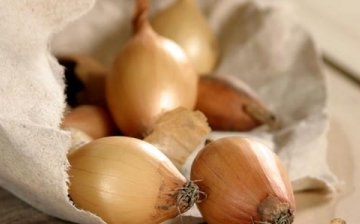
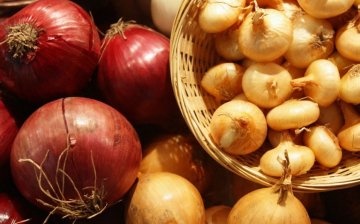

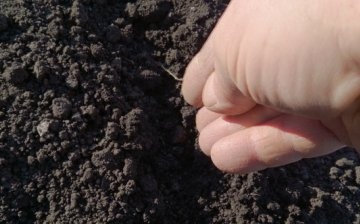

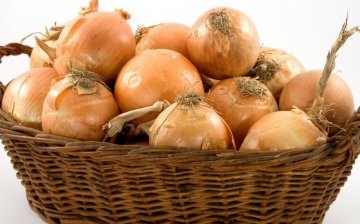






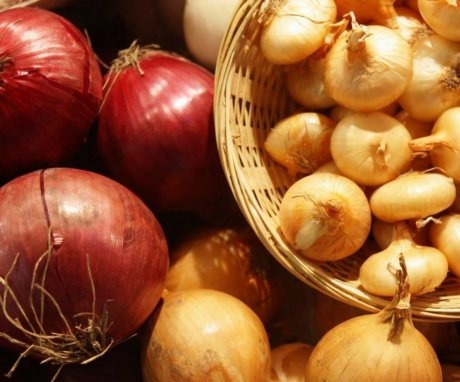
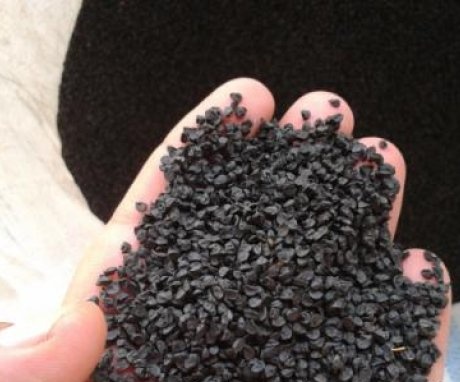
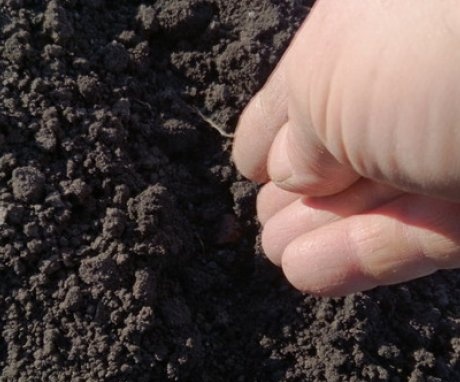
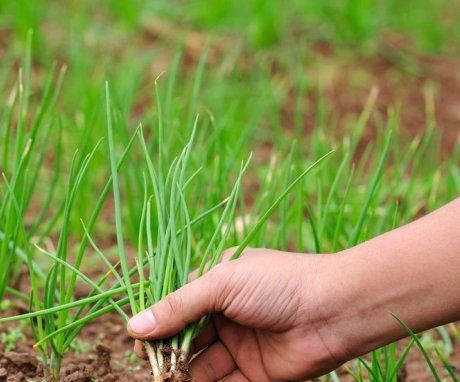
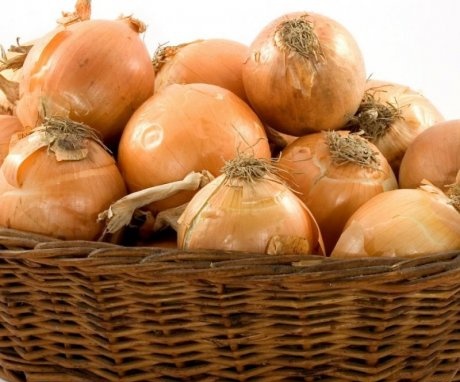
It is not entirely clear how to grow onions in one season, only from seedlings, or can the seeds of the varieties indicated in the article be planted in the ground in spring and onions will also grow by the end of summer?
It is quite possible to get a normal onion from the seeds, which is suitable not for planting in the next season, but for consumption. And the most important thing here is not the technology (it differs little from the traditional one), but the choice of the variety. From seedlings, you just get larger bulbs. The ideal option is early maturing hybrids. I had seeds Oporto (Dutch variety) and Odintsovets, the first bulb reached 300 g, the second - a little smaller.